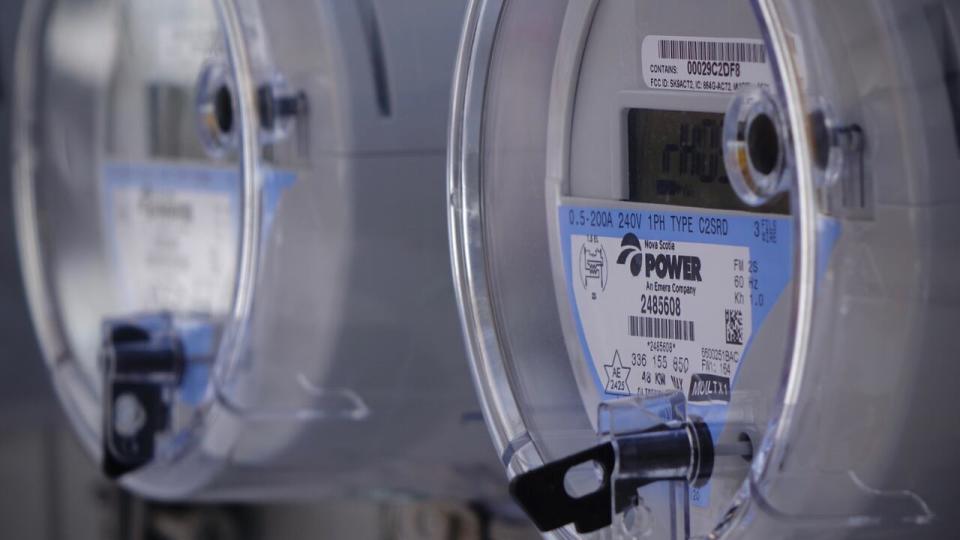Nova Scotia Power to provide detailed carbon reduction plan

Nova Scotia Power has been ordered to spell out exactly how it intends to get off coal by the end of the decade.
It comes as more questions are being raised about its preferred option for decarbonization — the proposed Atlantic Loop regional transmission system.
By 2030, the company must retire its coal-fired plants and achieve 80 per cent renewable electricity.
This week, regulators demanded "a detailed and specific" plan outlining how the company intends to meet its 2030 obligations, what specific steps are required, how they will accomplish that goal and when it will happen.
It wants to see it by no later than the end of the year.
"This plan must contain more than a general timeline and more than a brief generic description of the path forward," the Nova Scotia Utility and Review Board wrote in a decision approving capital spending.
Grid still dependent on fossil fuels
In 2022, Nova Scotia Power got 57 per cent of its electricity by burning coal, oil and natural gas.
The utility and review board said it expected, but did not receive, firm plans in 2023 related to coal conversion, additional wind generation, expansion and upgrade of the New Brunswick grid interconnection and battery storage. It is collectively known as the Eastern Clean Energy Initiative.
The utility paused on the initiative in 2022 when the Houston government imposed a cap on rates.
The company says it can still deliver these projects and meet the 2030 obligations.
High-level assurances don't cut it
It's road map for the long-term future of the electricity system is contained in a so-called "evergreen" Integrated Resource Plan, most recently updated in August.
Nova Scotia Power says it "details our plan for cutting carbon and providing clean, reliable power in both the short and long term — while focusing on managing costs for customers."
"This will help shape the detailed plan the board has ordered,' spokesperson Jacqueline Foster said in a response to CBC on the order.
Even so, the board says: "Given the delays which have occurred, for whatever reasons, in moving forward with major carbon-reduction projects, the time has come for a detailed action plan which goes beyond high-level assurances and graphs."
Running out of time
Environmentalist Brenna Walsh with Halifax-based Ecology Action Centre is not surprised by the board's order.
"We're happy to kind of see them moving toward some more clarity. 2030 is getting quite close in terms of planning these large electricity projects and how we get this done,' Walsh said.
The regulator acknowledged the company faces uncertainty over new federal clean electricity regulations requiring a zero-emissions grid by 2035, and how much money Ottawa will put toward the Atlantic Loop.
Atlantic Loop 'carries extraordinary costs and risks'
Nova Scotia Power has said the least expensive option to decarbonize is the proposed regional transmission system to bring hydro power in from Quebec.
It features prominently in the utility's updated integrated resource plan.
Commenting on the plan, the board's consultants noted a two-way transmission system allowing import and export of electricity from expanded wind capacity in Nova Scotia shows "lower system costs and lower emissions" than scenarios without the Atlantic Loop.
However, it warns the Atlantic Loop "carries with it extraordinary costs and risks."

Nova Scotia Power has said the least expensive option to decarbonize is the proposed regional transmission system to bring hydro power in from Quebec. (CBC / Radio-Canada)
In its assessment, consultants Bates White said the current estimated total cost of $7.5 billion is up from $2.9 billion in 2020 — a 159 per cent increase.
"While it is unclear how this overall cost would relate to the portion paid for by NSPI ratepayers, it is likely safe to assume that the cost to NSPI ratepayers has increased from the $1.7 billion figure used" in the four-year-old models included in the latest integrated resource plan.
Why regional co-operation required 'steep challenge'
In addition to cost concerns, Bates White noted "a particular risk unique" to a project requiring regional co-operation on this scale.
"At a minimum, utilities and regulators in at least three (and perhaps four) provinces are required to agree upon a project scope and cost allocation for the project," including where the power comes from, resale agreements, reliability agreements and purchase agreements.
"Despite indications of the availability of federal subsidies for the project, this challenge is steep," Bates White wrote in its Sept. 8 report.
The consultants cite an August 2023 N.B. Power assessment of the Atlantic Loop as evidence of hurdles that remain to reaching a regional consensus.
N.B. Power said the project could help the province get to net-zero, but by the 2040s it would be up to $270-million per year more expensive than building new carbon-free resources in New Brunswick.
"NSPI should not myopically pursue the Atlantic Loop or consider the Atlantic Loop as the only viable alternative to development of emerging no-carbon solutions like small nuclear modular reactors," Bates White said.
MORE TOP STORIES


